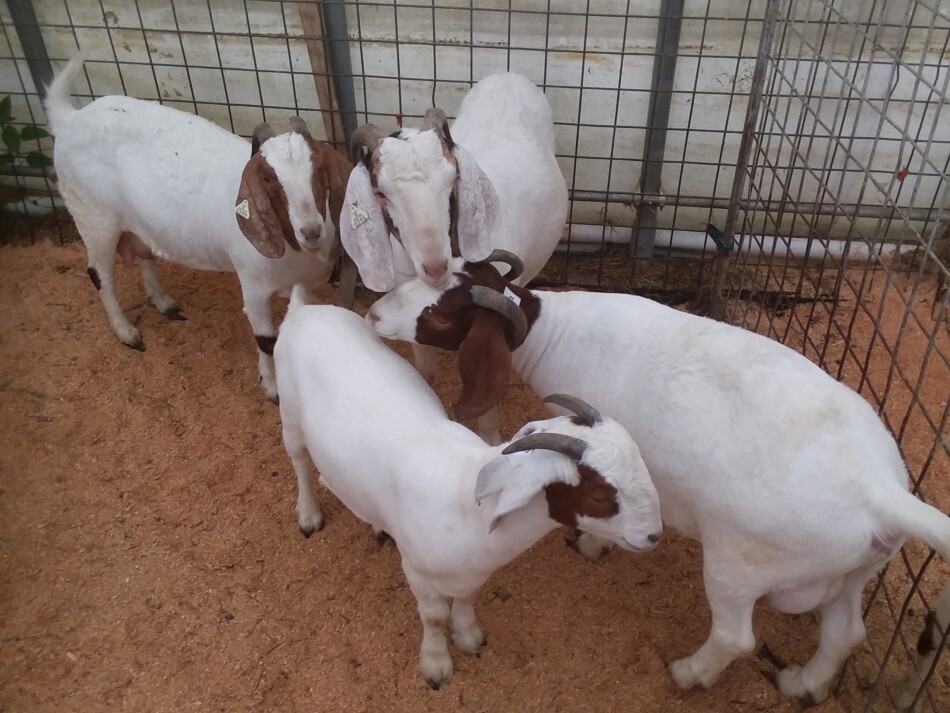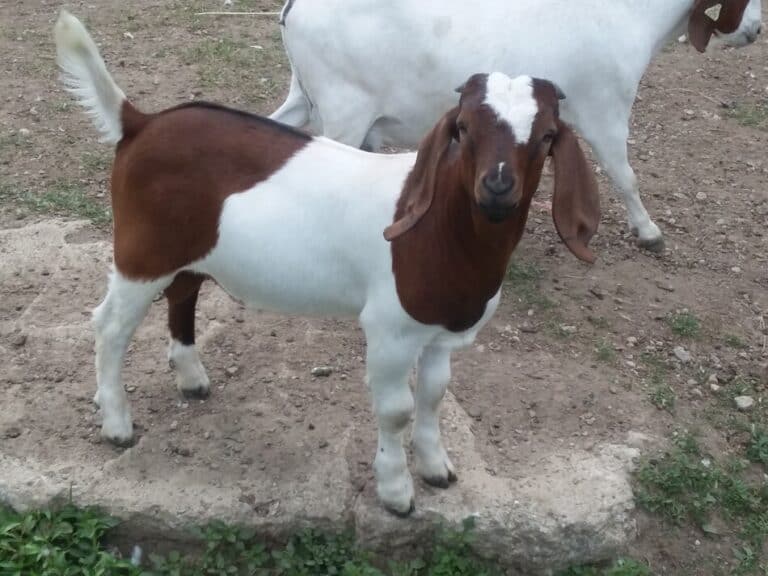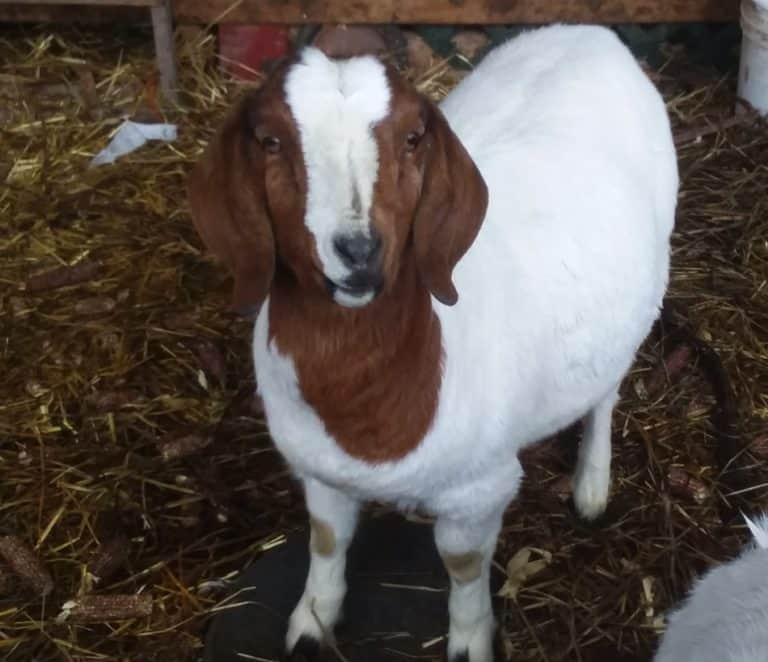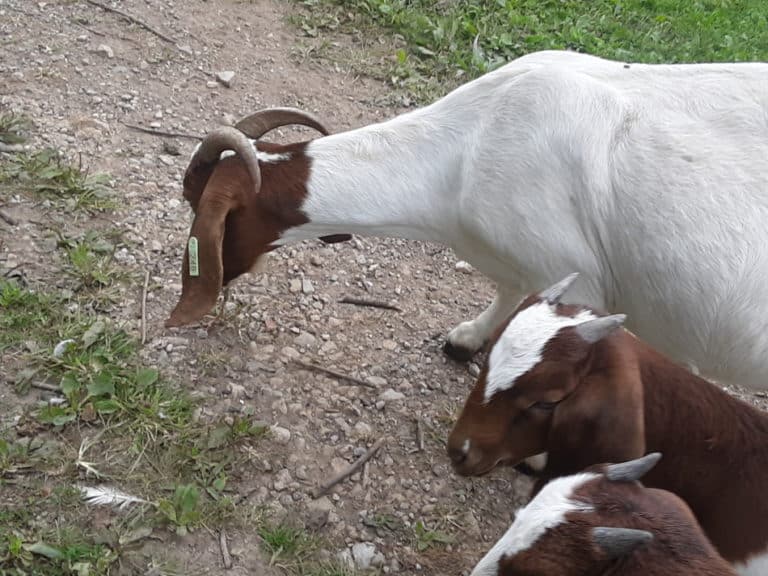When Is The Best Time To Sell Meat Goats?
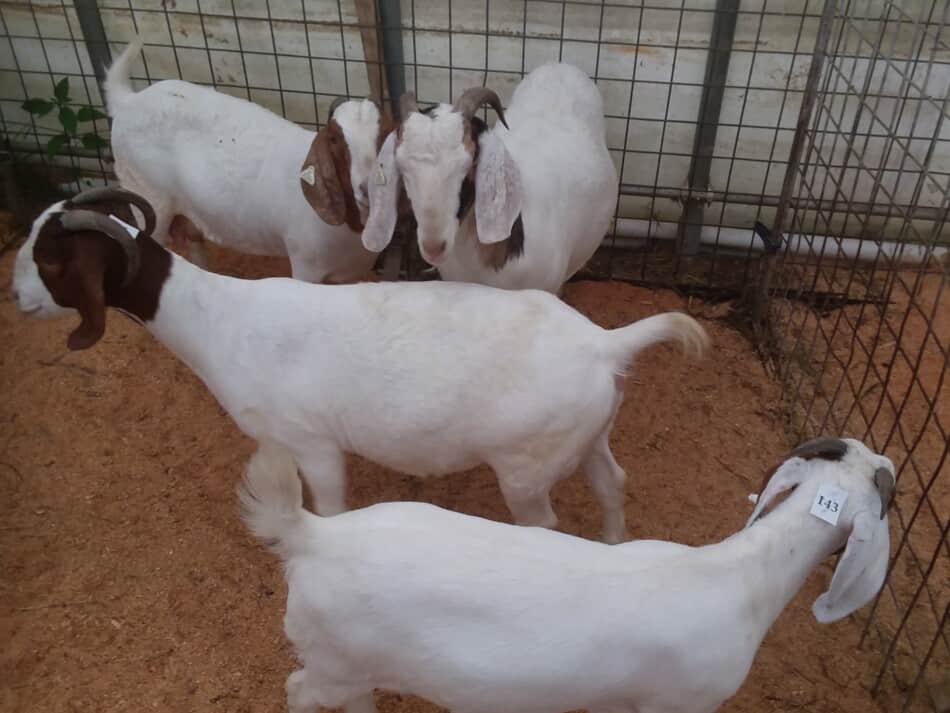
Selling your goats at the right time is a big deal. Of course, you want to get the highest prices you can for your goats, but how do you know when that is?
The best time to sell meat goats is when the demand for market goats in your area is higher, this is when you will get higher prices per head. High demand times for goat meat usually start in December and continues through March.
Best Breed Of Meat Goat For Beginners is an article I wrote to help you determine the best goats to start with for your situation. Starting off right makes raising goats more fun!
Sell goats when the market hits your target price
Selling you goats when the market hits your target price is the method that makes the most sense to me, if you are looking to get the most money for your market goats.
This involves some work on your part, you’ll need to know what price you are shooting for and you’ll need to keep track of the market to see when it is getting to your price range.
Look through past meat goat market reports for a price swing
Look back through the market reports and you’ll see a price swing, usually starting in December. All this is showing is the supply of sellable market kids for the year is tapping out, so price goes up. Supply and demand, working as normal.
I can tell you, without even knowing your price, that if you are wanting a high price, you’ll have to be out of the normal seasonal glut to get it.
This is not hard, but will require a bit more work on your part, usually keeping the goats for a few more months than normal, until the market prices go up.
While this will take more time and a bit more feed, do the math and see what you are gaining by selling off season. You might be surprised.
You can sell goats when they are ready, regardless of price
The most popular selling age for goats here seems to be 4-6 month old kids. People want to get the kids to a sellable weight and get them gone so they can put the money into something else.
I can understand that thinking, but that is not how you get higher prices for your goats. We have a huge Amish population in our area and the get them gone plan for goats seems to be the preferred selling plan (same for lambs).
To be clear, nothing wrong with this sell them ASAP plan, but it is unlikely to get you the most money per head.
Here are the current auction prices in our area, The Farm And Dairy Market Report. You’ll have something like this available in your area, as well. Search around online until you find your area’s equivalent, this is information you need.
Great looking goats will always sell well, for the time of year
As long as you have great looking goats, they will sell well for the time of year. That last part is key.
You can top the market in late summer with a price that looks terrible for December. Look through the market reports, you’ll start to see what I’m talking about. This is glut vs off season prices, the difference can be stunning.
To get the great prices, you’d have to hold the goats until later in the year, of course.
Goats sold in the “glut” will bring lower prices, overall
While there is a steady market for chunky little goat kids, you selling at the same time as all of the other people in your area is still the best way to get mediocre prices for your goats.
This is the other side of supply and demand, when you are in on “the too many goats today” side.
For some people, selling market kids when they want to is more important than getting a higher price. If that’s the case for you, no problem.
Some folks think about their operation and realize that for them, selling at a more convenient time is worth a hit on price. This is great (not that they are getting a lower price!), that they thought it through and decided for themselves.
Sometimes the extra work or expenses to feed your goats through a more challenging time will not be the best use of your time and resources.
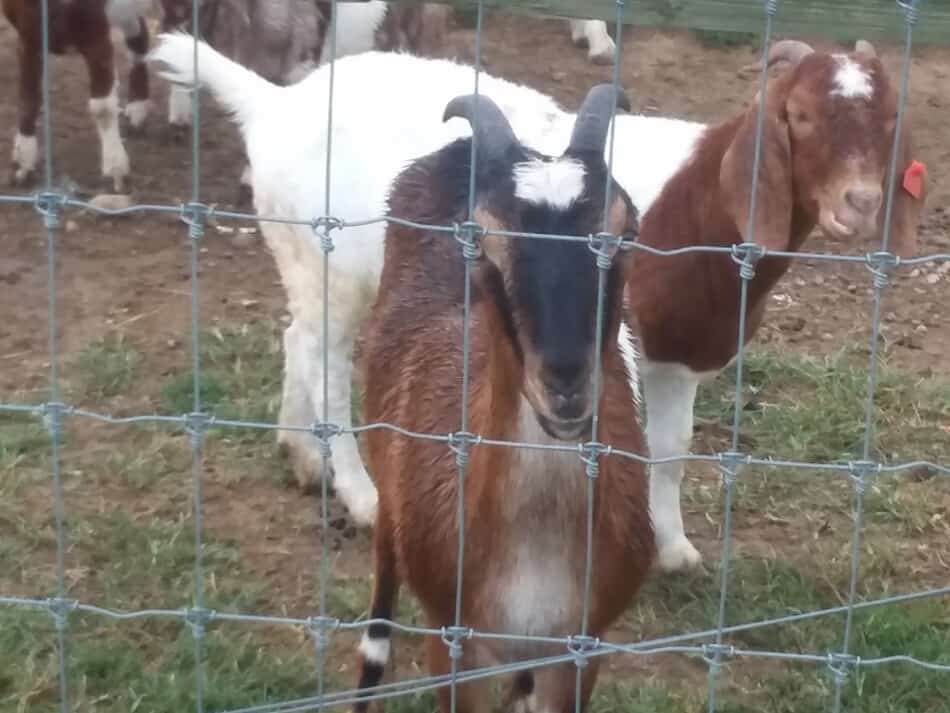
Around here, people sell goats when they run out of forage
It is common for higher than normal goats (and sheep) to start showing up at the sale when the forage availability for the area starts to decline.
Many goat raisers around here just like to have their small pasture eaten down but don’t want to feed any extra hay, so when the pasture is gone the goats are sold.
The reason you would want to know this is when everyone else is selling their goats, prices will be lower. It’s called the glut and it happens with all livestock. If you sell when everyone else does, you’ll get less for your goats, too.
Goats bring higher prices in winter/off season
Overall demand for goat meat is high, there really is no bad time to sell your goats. However, there are a few times of the year when the prices are especially high.
Here are some examples of reliably high goat prices:
- A few weeks before and during Ramadan
- Any wether that is in good condition and of adult size
- Goats sold during the “off season” meaning not grown on pasture
There is good news and bad news with this list.
Sell before or during holidays observed by people who traditionally eat goat
The main holiday that I am aware of is Ramadan. Goats sell very well when they are ready just before or during Ramadan. But having plenty of market goats ready for Ramadan is not without it’s challenges.
First off, Ramadan is a holiday that changes dates every year. It moves further toward the beginning of the year each time.
To hit this market you’ll have to move your breeding season to match the holiday, or hold or feed the goats to make sure they are in top form for this important holiday market.
Ramadan ends with a celebration meal of goat or lamb, from what the folks we know tell us. There is an additional celebration meal a little over two months later, also featuring goat meat.
The people we know that observe Ramadan and the feast days that follow would prefer to eat goat, but sometimes have to settle for lamb, if it’s all they can find.
So far this is great news, big holidays that goat is the preferred meat to serve. What’s bad about that? Nothing for the eaters, for the goat raisers, there can be some issues.
The calendar date of Ramadan moves each year
The main concern being that as the holiday advances earlier in the year each year, are you as a goat producer still going to be raising goats economically when your inputs increase?
Anytime you put heavy eaters, like growers and milkers on stored feed it will cost more to feed them for the same results than if you had them kid and milk in more baby friendly weather, like the summer.
Make sure you go over these numbers with a really sharp pencil, don’t leave out anything, including late night shifts in the kidding barn to keep those young kids from getting too cold.
Is the extra work worth the extra pay? You’ll have to run the numbers and see what works out for you.
Everyday market goat prices are high
From what we are seeing here, Ohio, goat prices are high and continue to stay high throughout the year. There really isn’t a bad time to sell your goats.
Goat prices are higher than we have ever seen. I was at the sale a few weeks ago and saw a 100 pound Boer wether sell for $500, yes I said wether! He was a real looker, but even so, I was surprised at that price!
Up until this year that price range was reserved for breeding stock, but no longer.
As long as the goats being sold are healthy and well fleshed, they are bringing top dollar. Thin ones, not so much, but goats in good condition and you’ll get a good price.
These high prices are for dairy as well as meat goat genetics. As long as the goats are healthy, buyers are willing to spend.

Your area will determine what breed of goat brings the most money
I do want to mention, that at least in our area Boer goats will sell for more money per head than a dairy goat or a Kiko type goat. I’m not sure why and I know that’s not the case all over, but here, Boer is king.
Last time I attended the goat sale, you could count on about $80-100 more per goat if they looked like a Boer.
Know the finish and size of goat your area likes
Each area’s customer’s have their own preferences regarding size and finish of market goats. Some areas like bigger goats, some like the smaller well grown kids. Our area seems to like anything Boer, regardless of size.
You need to know what the goat buyers in your area are looking for. Are you better off to sell a 50-60 pound kid or will it pay to feed those kids up to higher weights, more around the 90-100 pound mark?
Here is another management challenge for you to work out, not all of your goats are going to finish at the same time, since not all of your goats are growing at the same pace.
Additionally, males and females will finish differently. This difference will be very apparent with intact males versus doelings, but will also be seen between doelings and wethers.
If you are shooting for the highest prices, make sure you have your kids separated out into pens by sex, this way you can monitor intake among their peers and make sure the group is on track.
Know the local goat prices
Nothing will substitute for attending a sale, if you are planning on selling your market kids through the auction.
Even a very detailed market report, like the kind you can find online from the bigger auctions, will not be as helpful as seeing the process for yourself. Sincerely, you need to get there.
For example, in our area Boers sell well. I’ve already mentioned that, but how much better, that’s the $80-100 more per head part, we didn’t know until we attended the sale specifically to figure this stuff out.
Until I went to the sale to “spy around” I would have considered more of a Kiko type goat, since they are known for being more easy care, but around here they don’t sell as well as they Boer type goats.
Another unusual aspect of goat prices for our area is anything smaller than normal or unusually colored, sell poorly, as well. I’m not sure if this is due to a different body type of the eating qualities of smaller more pet type goats.
Look online at past years market reports for goat price trends
If you have not read the market reports for your area, you are missing a key piece of information regarding goat prices and especially the yearly or seasonal fluctuations in those prices.
Why guess at what is likely to happen when you can just read the market reports and get a good idea of what is going on right now in your area?
Here’s a link to the Mt. Hope Auction on their market reports page. Click around and see how the prices change with the seasons, they have multiple years’ worth of reports available here.
Look at the market reports that are closest to your area, I just refer you to Mt. Hope first because they have a nice, easy to use site to give you an idea of what you are looking for.
Ask fellow goat raisers for timing of sales
A great idea to figure out what will work in your area is to ask around and see what fellow goat raisers are doing. Get the details, especially helpful information would be the selling weights they are targeting.
What made them decide to sell their goats when they did? Are they looking for something specific, like a certain price on the market reports or, as an example, 2 weeks before a specific holiday?
How much work are they putting in? Some folks are very hands on with their herd, others not so much.
Also, consider what type of goats your helpful friend has and how similar they are to yours. For instance, in my area Kiko goat are the new popular breed, but they would have a very different marketing plan than someone raising Boers.
Same with dairy goats, I’ve seen some dairy goat wethers sell for crazy high prices, so it’s doable. Those goats were at least a year old, I’d guess a bit older, and were in super condition, real lookers.
The so so looking dairy type goats are still selling for so so prices, compared to the higher end of the market.
Calculate the best use of your goat raising resources
When it comes to selling your goats, believe it or not the highest priced times of the year may not be the best times for you to plan to sell.
The price you’ll get is only half of the information you need to make a good decision, you also need to figure out the costs involved in hitting a specific selling period, no matter how good the prices are.
Here are a few of the things that you need to have figured out before you can determine if selling your goats at a specific time versus a more normal selling date for you is the better option:
- Think about your additional expenses
- Consider your set up
- Amount of forage available at this time of the year
- Think about your time
- Consider the risks that come with managing the goats to hit a certain market
Know your additional expenses, usually high energy goat feed sources
Usually off season feed costs are higher than typical season, summer pasture or foraging area, feeding.
This is sort of a double whammy, in that your goats need a higher energy and quality ration, since they are growing and milking, but you are using little to none of the natural resources of your farm, for example grazing.
I have to admit, if you normally provide all of the feed for your goats’ daily ration, then off season feeding will not change your expenses much.
The costs that usually get overlooked are the creep feed and the better than normal winter hay needs. The hay that was acceptable for gestating does is not going to cut it for lactation.
I’m sure you know this, but what I’m trying to point out here is did you actually do the math? Do you know if these extra expenses are likely to pay off for you?
Consider your barn space available when your goats need extra care
Where are you putting your goats when they need more feed or care, like growing market kids or lactating does? Especially if you are doing off season or multi group kidding.
Every once in a while I think, “wouldn’t it be great to have does kidding once a month?” (Spoiler alert: not a great idea when you work through it!)
In my mind I can see market ready kids growing and being ready to sell on a schedule that would spread out the income from the goats, but also spread out the expenses.
Then reality sets in and I start thinking about the logistics of making this happen, it gets scary fast! There would be pens all over, different groups of goats needing very different diets is just the start.
Don’t forget about getting up to check on the moms to be, that would be a nearly never ending job, since as soon as one group finished kidding, the next group would be nearly ready to start!
The reason I wrote all of this is that it’s easy to think that something sounds good, then when you get to the part of actually putting it together, things start to fall apart or get really complicated and needy.
Don’t do this to yourself, or at least plan it out in your mind first and be very honest about your willingness to do the work and your ability to finance all of this until it starts to pay.
When I go over the numbers, usually it ends up that I am better off to stick to a schedule that works well for me and my goats then sell them when they are looking good.
Is the normal forage available for your goats?
This really circles back to the first point of kids and lactating does needing higher quality feed sources, which will be more expensive in the off season.
You really need to sharpen your pencil here and have these numbers solid.
If you are providing all of the feed for your goats, meaning they do not harvest much food themselves, then your feed expenses may not change much throughout the year.
If however, you are counting on a significant amount of your goats’ daily intake to come from forage, when you change the kidding season, you knock out this forage window for growing your goats.
Know the risks of kidding to hit this specific market period
When you’re asking about the best time to sell meat goats, what you are really after is the best time to have your does kidding, since kidding time sets up the rest of your management year.
Kidding time is one of the main determiners of marketing time. But what is the best time to plan for kidding? Kidding that will be easiest on you will be in late spring to early summer.
Kidding at a different time of the year than this makes more work for you. Sometimes the extra work will be worth it, other times, not so much!
Off season kidding requires more inputs for the same results
Really what you need to consider here is do you have the time to dedicate to kidding in poor weather conditions? Especially when it’s frigid, frozen kids don’t make you any money.
The other thing to consider is that goats overall do not handle the cold well, they are not insulated with a layer of body fat like sheep and cattle are.
This means that feeding goats to gain in the cold is going to be more costly than normal. It has to be because not only are you providing feed for growth, you are also providing feed to burn for keeping the goat warm.
I consider cold to be the biggest obstacle to off season kidding, that’s because it’s the most likely complication in my area (Ohio), for off season kidding.
In your area the biggest challenge may be cold, as well, or it may be something else, but it will be something substantial. Identify the challenge and consider if working through it is worth the results for you and your herd.
There is a reason why everybody sells their goats when they do, usually it’s just easier or they have run out of the forage they have available.
You need to know what the costs are for the additional work you are planning to take on. Add to it the likelihood that things will not go exactly as planned until you get a system figured out.
Not all of your goats will make the transition to a different management system. This is not surprising, changing what you are doing always means adjusting your selection criteria.
Since not all of your does will be able to perform in the new system, so you’ll have some culling to do.
